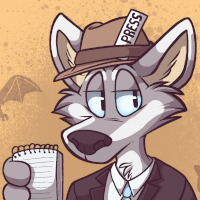Housepets! Will Do It For Free (Book 6), By Rick Griffin, Book Review By Fred Patten
by Pup Matthias
Submitted by Fred Patten, Furry’s favorite historian and reviewer.
 Housepets! Will Do It For Free (Book 6), by Rick Griffin.
Housepets! Will Do It For Free (Book 6), by Rick Griffin.
North Charleston, SC, CreateSpace, November 2015, trade paperback $13.95 (52 pages).
Another year passes, and here is the new annual collection of the Housepets! online comic strip by Rick Griffin. Housepets! has appeared each Monday-Wednesday-Friday since June 2, 2008. It has won the Ursa Major Award for the Best Anthropomorphic Comic Strip for every year since! – for 2009, 2010, 2011, 2012, 2013, and 2014. Umpty million thousand furry fans can’t be wrong.
Book 6 contains the strips from June 19, 2013 to May 30, 2014; story arcs #70, “Mice To Meet You” to #77, “Heaven’s Not Enough, part 1”, plus the one-off gag strips before and between these.
Housepets! is the story of the dogs, cats, ferrets, rabbits, and other pets of Babylon Gardens, a typical residential suburban neighborhood – in an alternate universe. The animals are larger than in our universe (but not human-sized), can talk, are usually bipedal, and address their human owners as “Mom” and “Dad”. Their status is somewhere between pets and children. Points established over the years are that humans can bequeath their belongings to their pets, who do not need a human guardian; human storekeepers are not allowed to sell catnip to cats; human police forces have an auxiliary of Police Dogs who are not all police dogs; the pets comment sardonically on how they can go naked in public but their human “parents” can’t; and – lots of other stuff. Read the rest of this entry »



 GeneStorm. Book 2, Fort Dandelion, by Paul Kidd
GeneStorm. Book 2, Fort Dandelion, by Paul Kidd




 The Wind in the Willows, by Kenneth Grahame. Frontispiece by Graham Robertson.
The Wind in the Willows, by Kenneth Grahame. Frontispiece by Graham Robertson. College Catastrophe, by Jan. Illustrated.
College Catastrophe, by Jan. Illustrated.